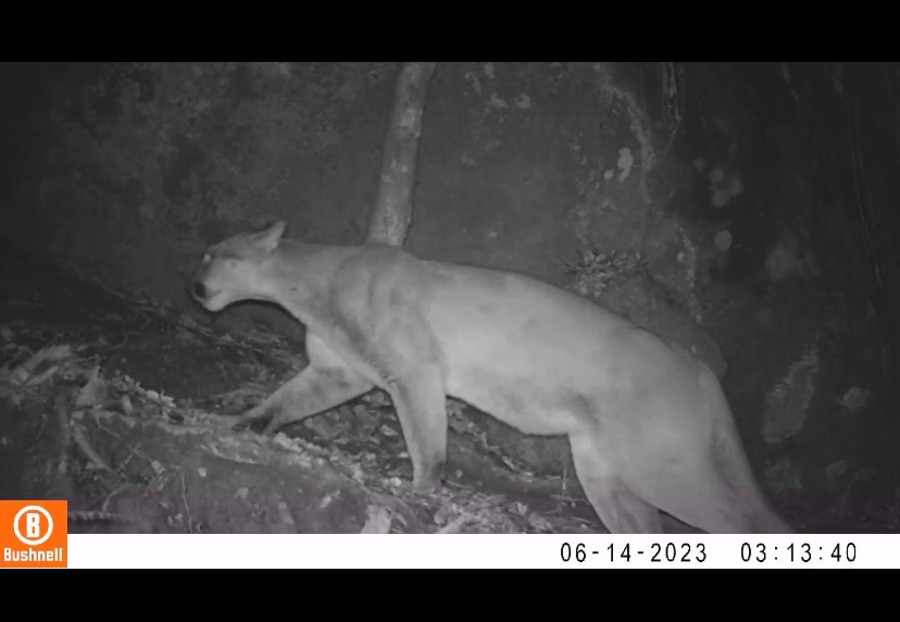
Mammalian life is arguably some of the most exciting things to witness when you go to a new country. In Costa Rica the wildlife is famous, for example the endangered Spider Monkey (Ateles geoffroyi), the almost alien like Kinkajou (Potos flavus), or the notorious Jaguar (Panthera onca). While it might be possible to see these animals with your eyes in real life, the best chance of being able to “see” one is through a method called camera trapping.

The use of camera traps is one of the most cost effective, user-friendly, non-invasive ways to capture wildlife in their natural habitat without having to actually be present. Each camera is set with an infrared sensor, which detects changes in temperature (like body temperature), causing the camera to either take a video or a picture (videos in our case on the reserve). This sensor works both day and night, capturing diurnal and nocturnal wildlife. Here at Cloudbridge, we’ve had an ongoing camera trap project since 2015, which ultimately is what helped to create our mammal species list. By having 10 cameras placed throughout the reserve in various locations, we’ve been able to capture a myriad of species doing a variety of different activities.

This past year, research intern Louise Ilott-Baudon from the UK worked with our camera trap project for about 7 months, from October 2022 to April 2023. In doing so, she too was able to see a variety of different species littered throughout the reserve. While normally the camera traps are set in a random grid placement to produce unbiased results, Louise was curious to see if targeting seemingly high traffic areas would allow for a greater number of camera traps events (each time the camera is set off, it’s called a camera trap “event”).

For the first 92 days of her stay, she left the cameras as they were in the randomized placement. For the remaining 92 days, she moved some of the slower traffic cameras to potentially higher activity areas to see what kind of difference that would make. While Louise was aware that this created some bias, the results spoke for themselves as the change in placement did indeed cause a higher number of camera trap events, as well as a greater number of species diversity caught. Since camera trapping is such a repeatable project, we highly recommend reading her paper so that you can read more intimately how it was done and perhaps mimic a similar protocol yourself.

Suggested reading:
- Curious to try and set up a camera trap on your own? This article gives a beginners guide on how to establish and maintain a trail cam, which is a good place to start if you’ve never done it before.
- For a more detailed reasoning as to why camera traps are important, the World Wildlife Fund describes the process, pros, cons, and everything in between about their usage. Not only do camera traps help us to realize what animals may be living in a particular place, but they also let us know of certain behaviors and responses to human interactions.
- Wondering what type of camera suits you best? While there are more sophisticated versions ranked from this year, they might run up your bill more than you’d like. But it’s okay, because this buyers guide can lead you in the right direction of finding a camera that suits your needs, be it your budget or video quality.
